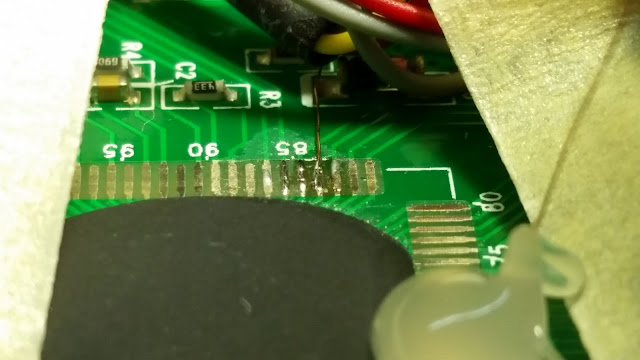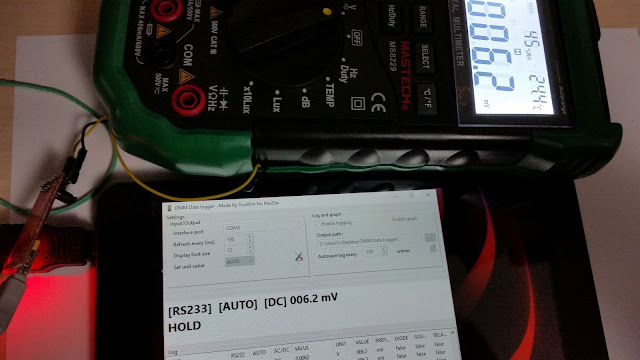I bought a Mastech MS8229 multimeter for a decent price because it offered a few compelling extra features which would be nice to have - sound meter and luxmeter. I also knew from this post that data logging was possible to 'bolt on' afterwards.
It has a really slow autoranging, especially on the Ohms scale, taking 2-3s to read a resistor.
The input protection is almost inexistent, which is not a huge issue if you don't intend to use it at high voltages.
It has a multi-purpose mode of resistance, diode, continuity and capacitance - which defaults to resistance. I am using continuity mode 90% than any other mode so I would have liked that to be the default or to have it's separate switch position.
The rotary switch cannot be moved without holding the device with the other hand and it frequently goes between positions. While in that erroneous mode you have no indication that the device is misbehaving.
No auto-hold or smart hold feature. I really don't understand why this kind of hold feature exists on all these meters, it has been completely useless for the past >15 years.
Crappy probes - not the worst but just slightly above - which makes the continuity buzzer work with a one second delay. My 'fix' for this issue is to use a 200 sandpaper on the tips each 6 months or so. By doing this the tips are also sharpened, making them more useful. If you cringe at this then you have to know it takes 20s to do, the probes are likely worth 4$ a pair and you would have to do it 100 times before the tips are completely eaten away. I think that's the best solution to the problem and I haven't seen any tip on doing this elsewhere.
I intend using this for 3-5V work while connected to a [Windows] tablet that's running off it's own battery so if that matches your use case read on. For the isolated version check this site: http://www.hw2sw.com/2012/09/25/adding-data-logging-into-mastech-ms8229/ or this: http://hackcorrelation.blogspot.de/2015/10/adding-isolated-data-output-to-mastech.html.
The meter takes 1385uA while running and with TXE (data enabled) 1400uA. So leaving the TXE tied to ground at all times should not make any difference in battery life. Adding an isolated data output will double the consumption, read below to know why.
Note: the datasheet for the FS9721_LP3 chip says it will only allow 2mA drain on pin 64 (see IRSOUT) however I found out it happily draws >40mA, so be sure not exceed the current limit.
There's only one a few things that are needed: pin 64 goes to the RXD pin on a TTL/USB converter while GND (I used the battery terminal) goes to GND on the usb converter board.
Soldering 0.1mm takes a bit, I secured the ends with hot glue, but the whole process should not last more than 15 minutes.

And with the multimeter's TX and GND wires connected to RX and GND on the UART converter I get the sought-after data:
Watch out for a next post in which I add a proper (isolated) data output.
Short review
TL;DR: I would likely not recommend this meter for the money it currently retails for (45E).It has a really slow autoranging, especially on the Ohms scale, taking 2-3s to read a resistor.
The input protection is almost inexistent, which is not a huge issue if you don't intend to use it at high voltages.
It has a multi-purpose mode of resistance, diode, continuity and capacitance - which defaults to resistance. I am using continuity mode 90% than any other mode so I would have liked that to be the default or to have it's separate switch position.
The rotary switch cannot be moved without holding the device with the other hand and it frequently goes between positions. While in that erroneous mode you have no indication that the device is misbehaving.
No auto-hold or smart hold feature. I really don't understand why this kind of hold feature exists on all these meters, it has been completely useless for the past >15 years.
Crappy probes - not the worst but just slightly above - which makes the continuity buzzer work with a one second delay. My 'fix' for this issue is to use a 200 sandpaper on the tips each 6 months or so. By doing this the tips are also sharpened, making them more useful. If you cringe at this then you have to know it takes 20s to do, the probes are likely worth 4$ a pair and you would have to do it 100 times before the tips are completely eaten away. I think that's the best solution to the problem and I haven't seen any tip on doing this elsewhere.
The mod
First, if you don't know why you need the isolated data output - don't try this, really. It can fry your computer/tablet, yourself, your significant other, etc.I intend using this for 3-5V work while connected to a [Windows] tablet that's running off it's own battery so if that matches your use case read on. For the isolated version check this site: http://www.hw2sw.com/2012/09/25/adding-data-logging-into-mastech-ms8229/ or this: http://hackcorrelation.blogspot.de/2015/10/adding-isolated-data-output-to-mastech.html.
The meter takes 1385uA while running and with TXE (data enabled) 1400uA. So leaving the TXE tied to ground at all times should not make any difference in battery life. Adding an isolated data output will double the consumption, read below to know why.
Note: the datasheet for the FS9721_LP3 chip says it will only allow 2mA drain on pin 64 (see IRSOUT) however I found out it happily draws >40mA, so be sure not exceed the current limit.
There's only one a few things that are needed: pin 64 goes to the RXD pin on a TTL/USB converter while GND (I used the battery terminal) goes to GND on the usb converter board.
Soldering 0.1mm takes a bit, I secured the ends with hot glue, but the whole process should not last more than 15 minutes.

 |
| Ground connection taken from a convenient place |
 |
| A hole was drilled to pass the two wires. Later, the USB connector pictured above will come out of there. |
And with the multimeter's TX and GND wires connected to RX and GND on the UART converter I get the sought-after data:
Watch out for a next post in which I add a proper (isolated) data output.






What module do i have to use? Ttl to usb or rs232 to usb?
ReplyDeleteTtl
Delete